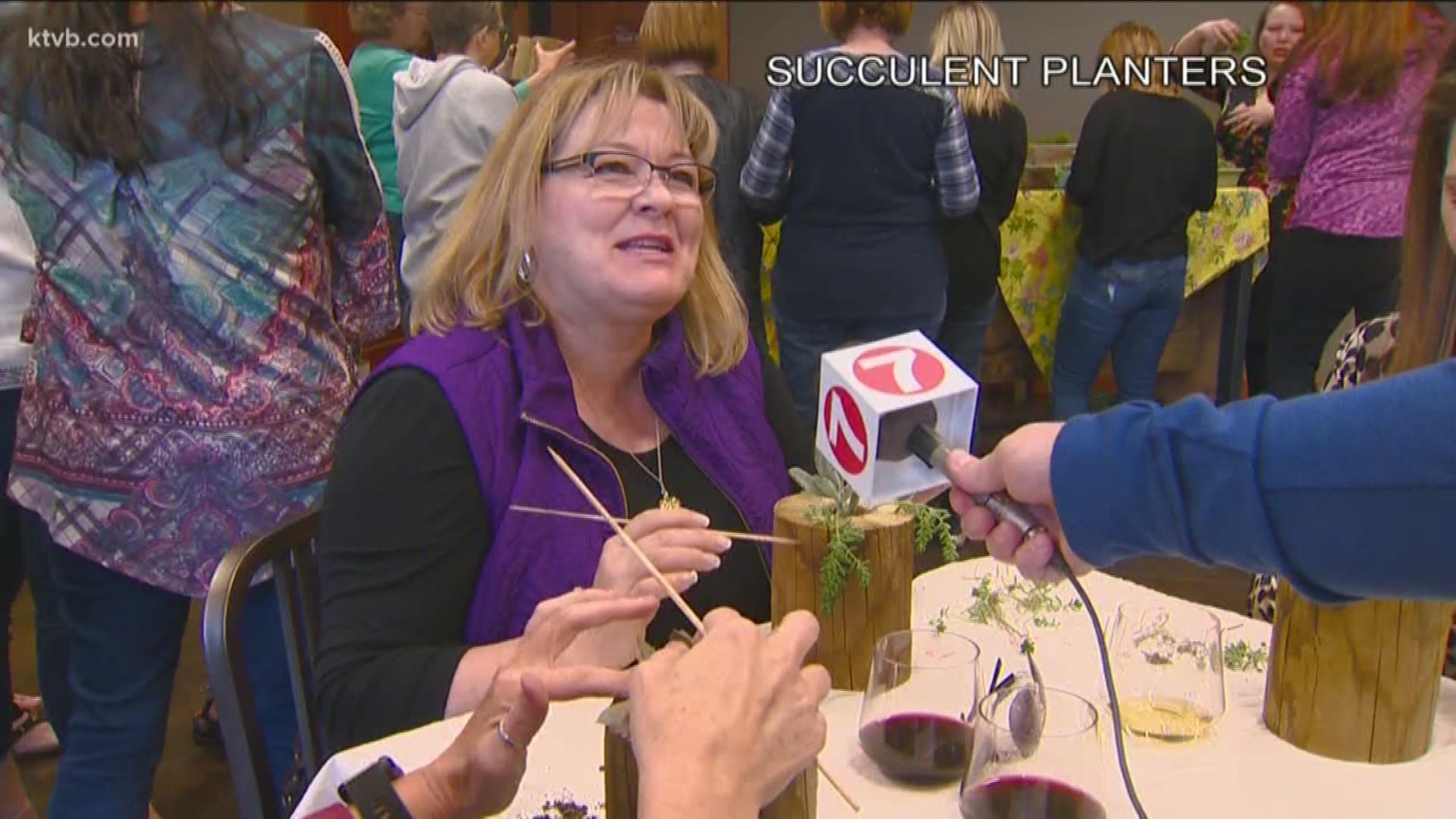BOISE — Every week on “You Can Grow It,” garden master Jim Duthie shares a variety of helpful gardening ideas and information that you can use in your own gardens at home. And for the next couple of weeks, Jim is going to highlight some of the fun things he’s talked about this season.
Today, a little bit about tree pruning, growing succulents, farmers markets, and more.
From spring to fall on “You Can Grow It,” I bring you gardening tips and ideas to help you to be a successful gardener. Sometimes we’ll talk with local experts to get the best advice on gardening subjects. Here are a few of the things we talked about this year on “You Can Grow It.”
On fruit trees, there are two types of buds to watch for when you’re pruning: vegetative buds, and fruiting buds.
The flat-looking buds that hug the stem are vegetative buds. They won’t produce fruit, just leaves and branches.
But this bud is plumper and extends away from the stem. That’s how you know this is a fruiting bud.
Succulent planters:
Seasonal florist Dacia Hill teaches custom floral and plant design classes, and tonight about 30 women are putting their imaginations and creativity to work. Some have never done anything like this before.
“I love gardening, so this was an opportunity to do something a little bit different…”
“So I am going strictly for survivability here…”
A few of these women have definite ideas about their designs, but others get their inspiration elsewhere.
“By looking at everybody else.”
“I’m going to try to put as much stuff in there as I possibly can.”
Micro greens:
Micro-greens will grow in almost any container, from trays for mass plantings, to individual pots for a variety of greens.
“All these are, are these little 4-inch pots that you can get at almost any nursery,” said Lindsay Schramm with North End Organic Nursery.
“Put some soil in them, sprinkle the seeds on top, water them, give them the light that they need, and from 7 to 21 days from now you’ve got instant salad micro-greens.”
“So, from seed to feed in a couple of weeks.”
Nampa Farmers Market:
It’s an iconic part of Idaho, farmers markets every weekend stretching from one end of the Treasure Valley to the other. We went to the Nampa Farmers Market on opening day.
“We’re growing leafy greens and small baby root vegetables, tomatoes, cucumbers, on about 7,500 square feet. So the majority of our produce is sold here at the Nampa Farmers Market.”
“Well, this is the original. This is our Idaho mustard. It’s the one that started it all seven years ago.”
“I do about 25 different varieties of pepper jams. I have everything from no heat in the pepper jam, to how spicy can you take it?”
Sample the flavors before you decide what to buy. It’s just part of the intimate farmers market experience.
“I love it. I love being here. I mean, it’s a friendly environment, the customers are great, it’s local.”
Hacks 101:
Peony blossoms are beautiful when they start to open up, but I’ve found that the flowers get so full and heavy, that the stems can’t hold them up anymore, and they start to bend over onto the ground. But I found a simple solution -- I use tomato cages.
I get impatient waiting for newly planted seeds to sprout up from the ground. But I can speed up the process by soaking the seeds in water.
That softens the hard seed covering, and allows them to germinate faster. It works well for large seeds like peas and beans, and even for some smaller seeds, like these beets. Simply let them soak overnight in warm water, then plant them as you normally would the next day. These sweet peas normally take 5-7 days to germinate, but after soaking overnight, they sprouted in just two days.
Finally, here’s a way to save money on potting soil, especially with big, deep containers like this one. The flowering plants that are going in this pot aren’t very deep-rooted, so they don’t need soil as deep as the pot.
Instead, simply fill the bottom of the pot with some light material, like aluminum cans, plastic water bottles, or even discarded plastic plant starting pots. Then fill up the rest of the container with the potting mix.
As you can see, we cover a lot of different topics on “You Can Grow It.” Again next week, we’ll look back at some of the other fun and interesting things we talked about, including Japanese garden design, xeriscaping, and a few pictures sent to me from Idaho gardeners like you.

